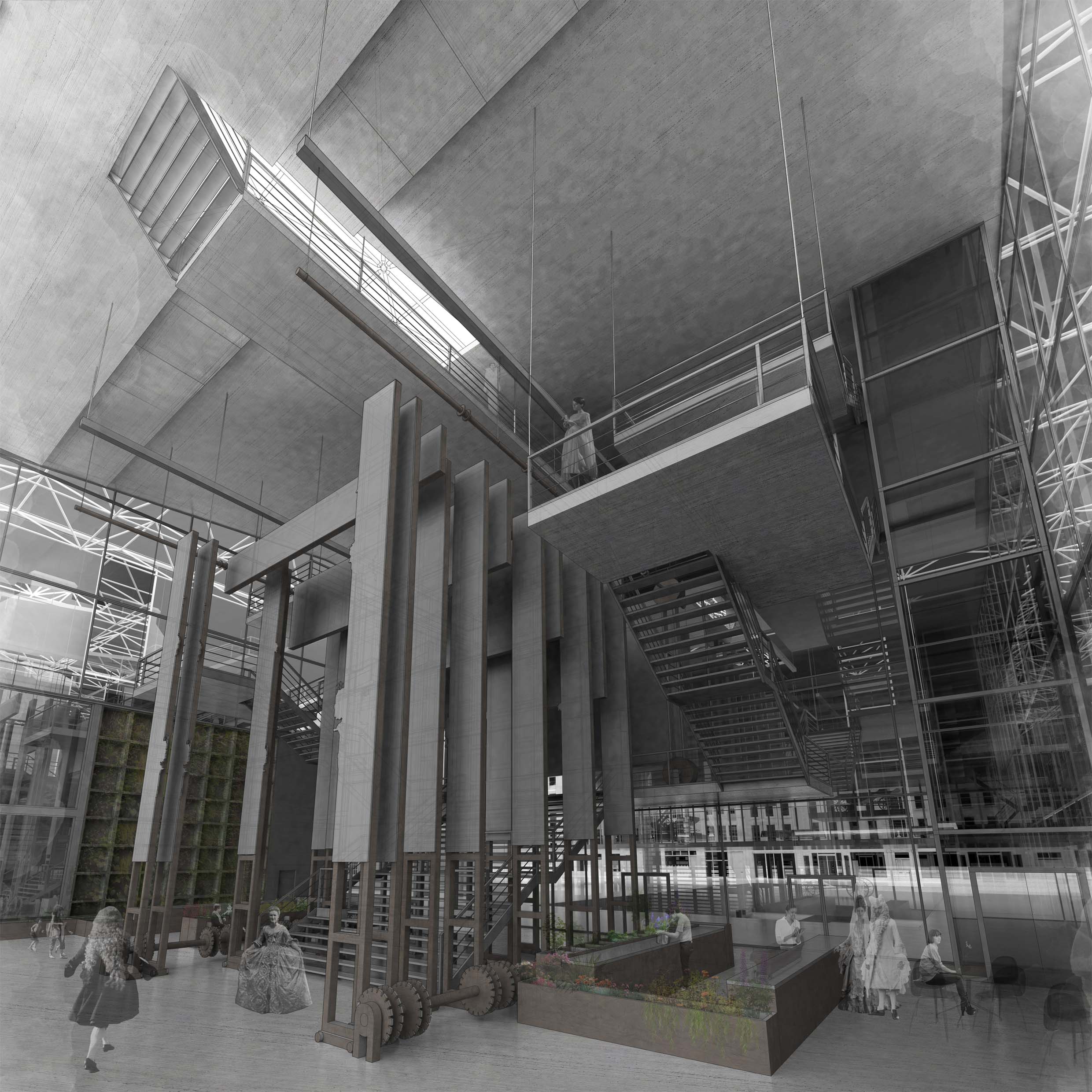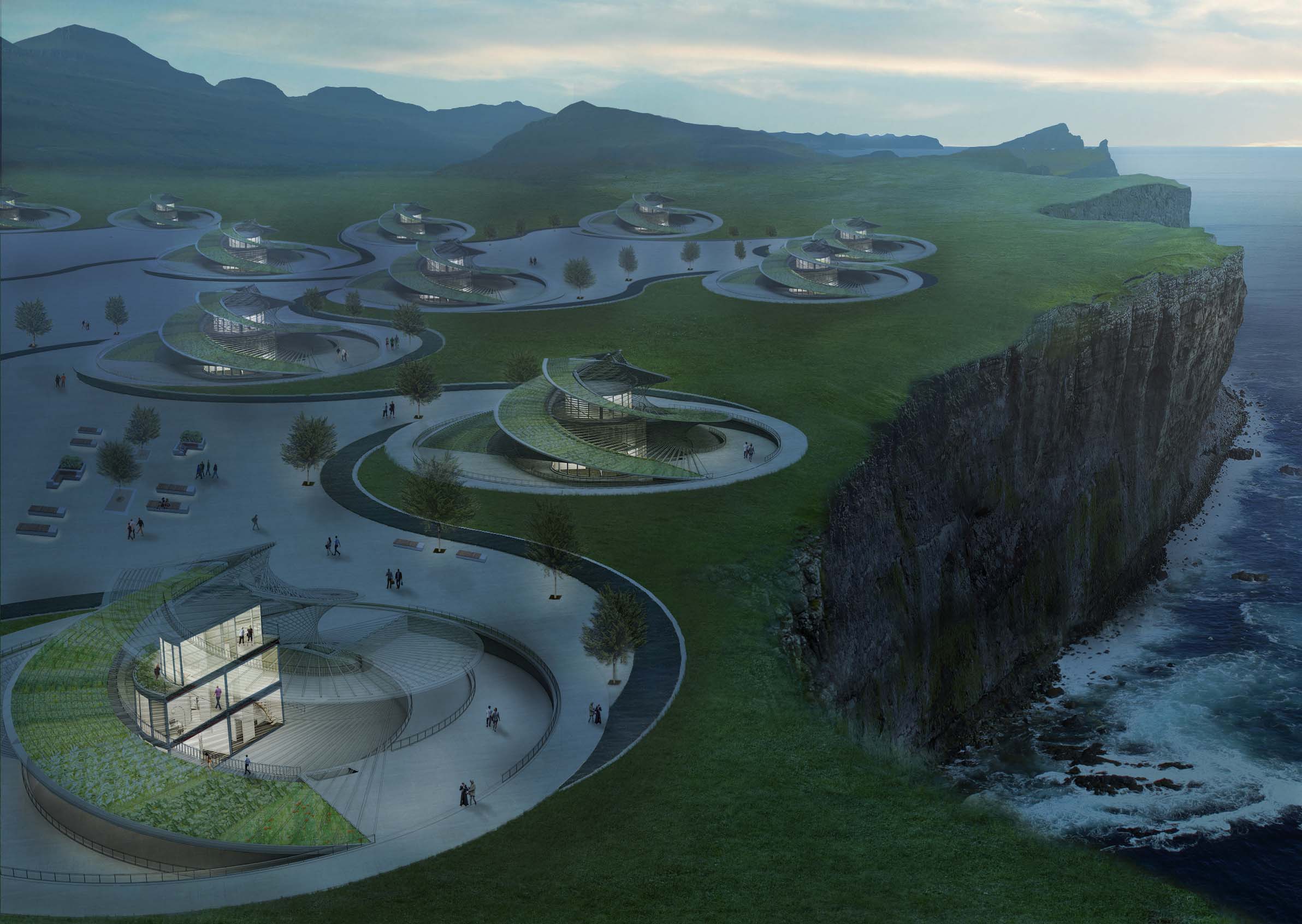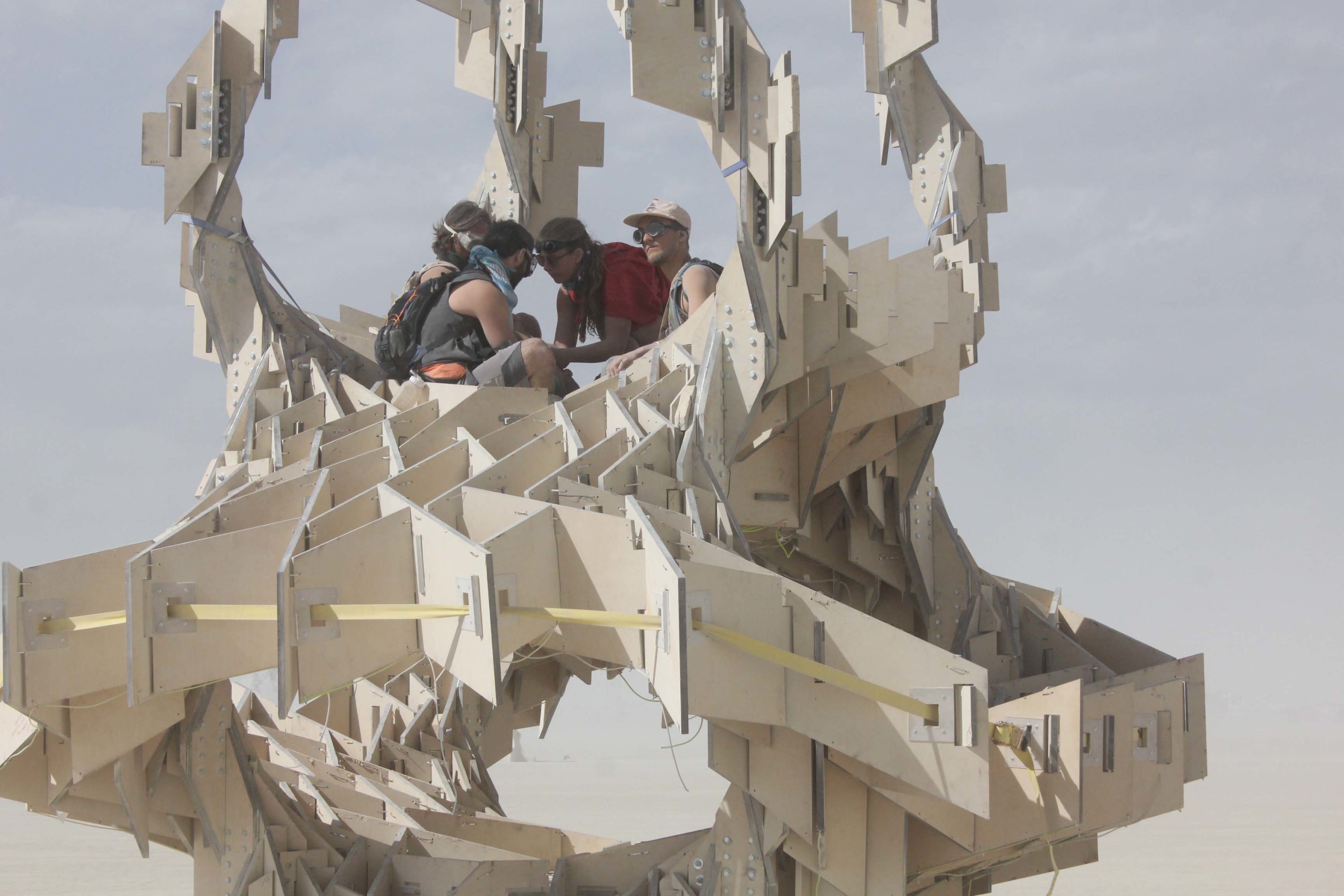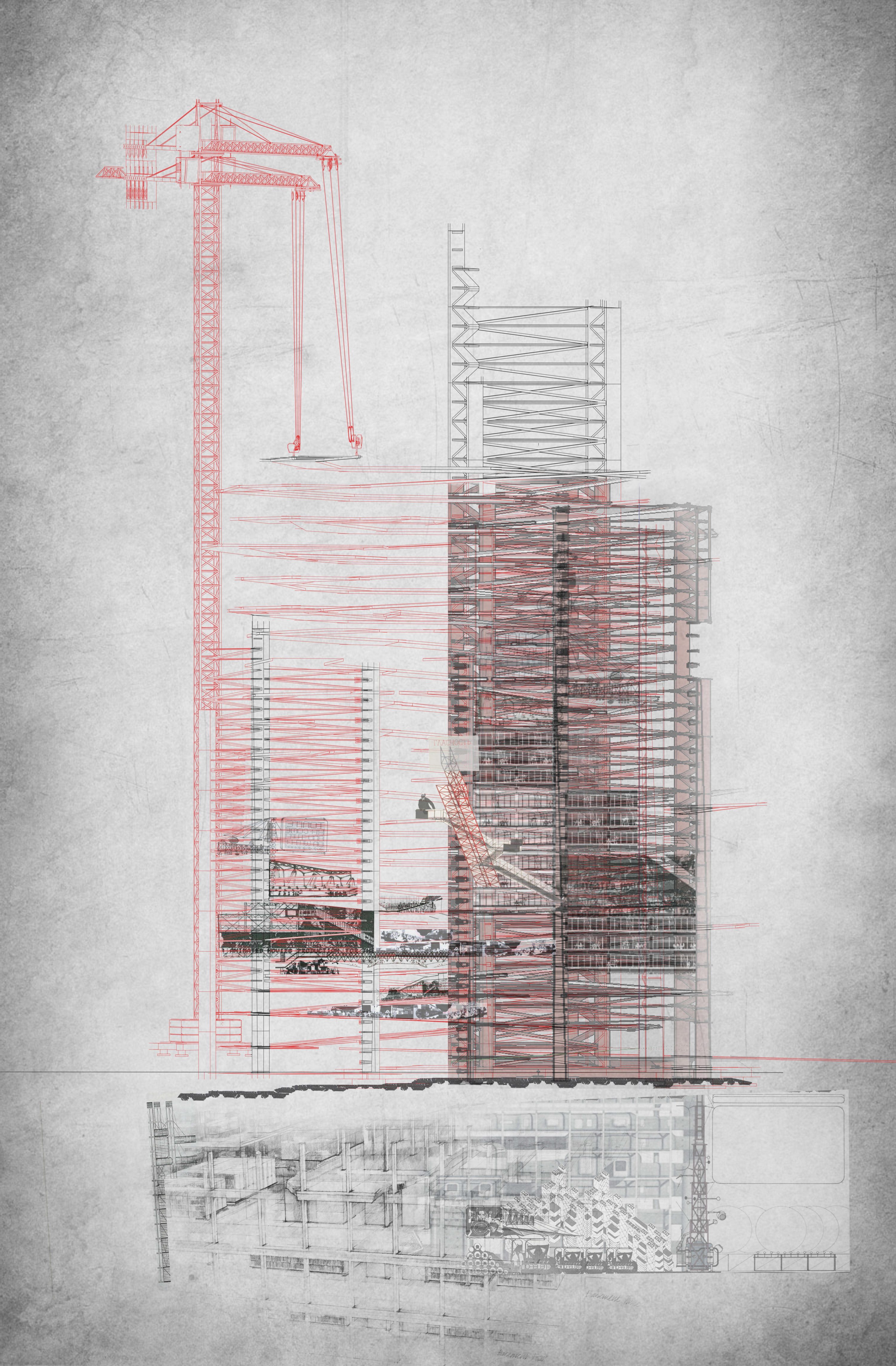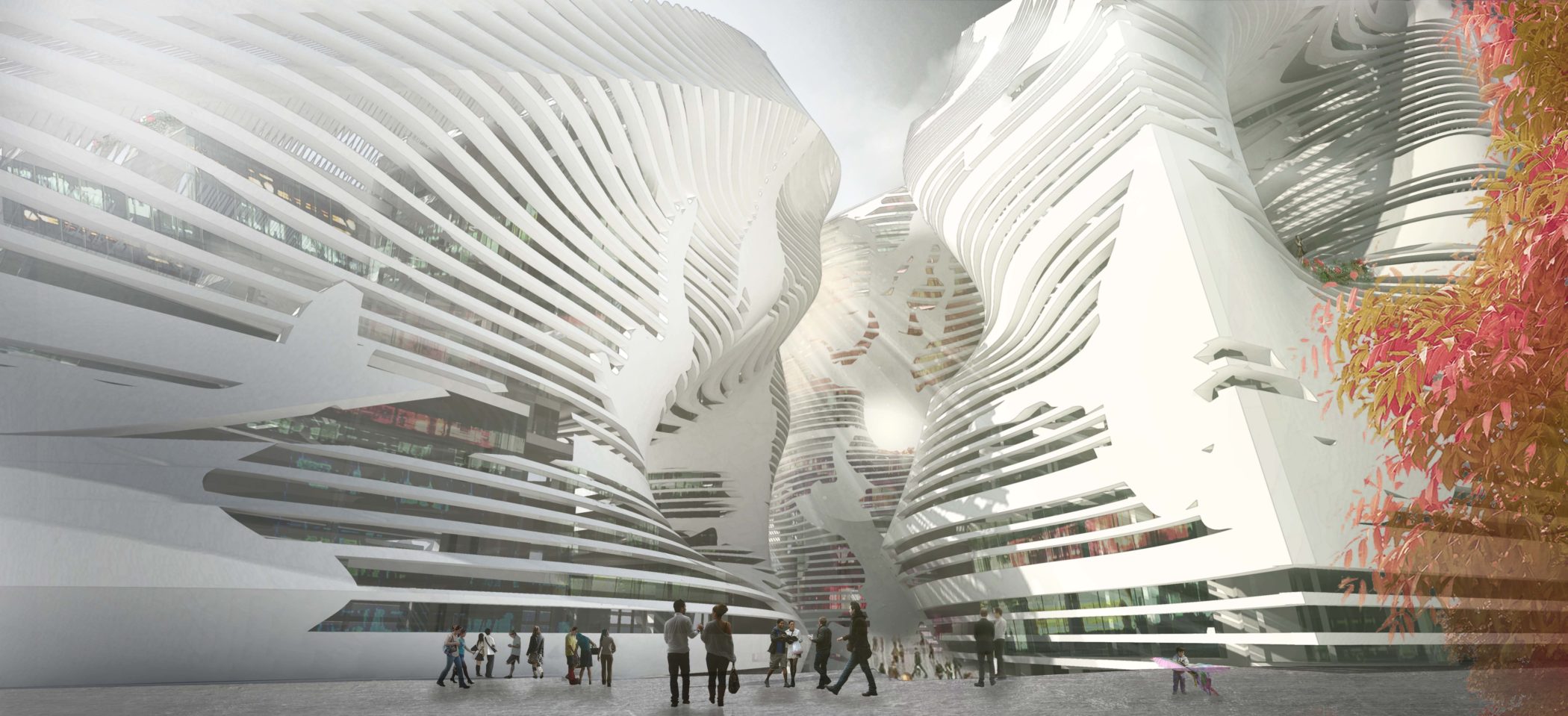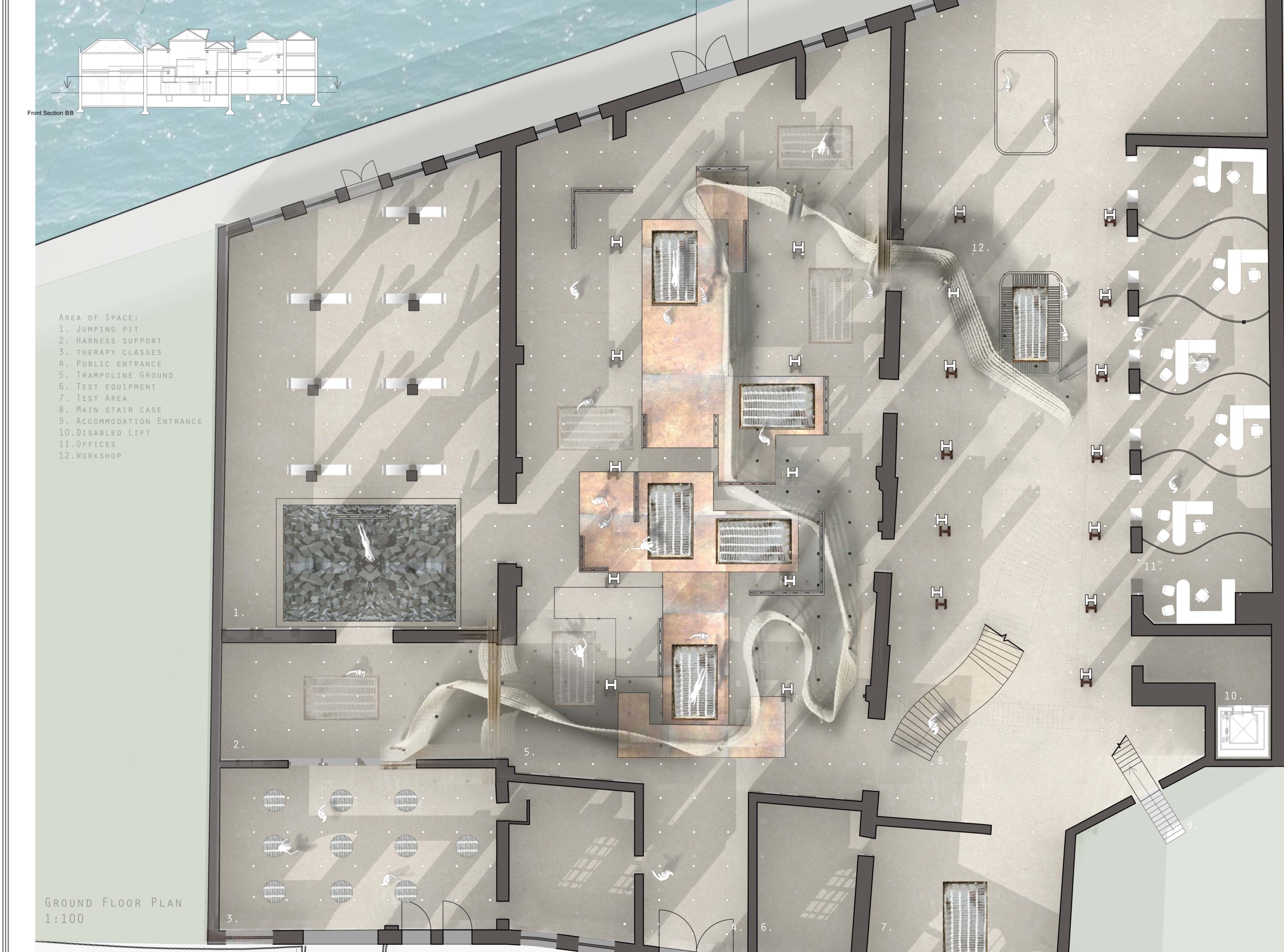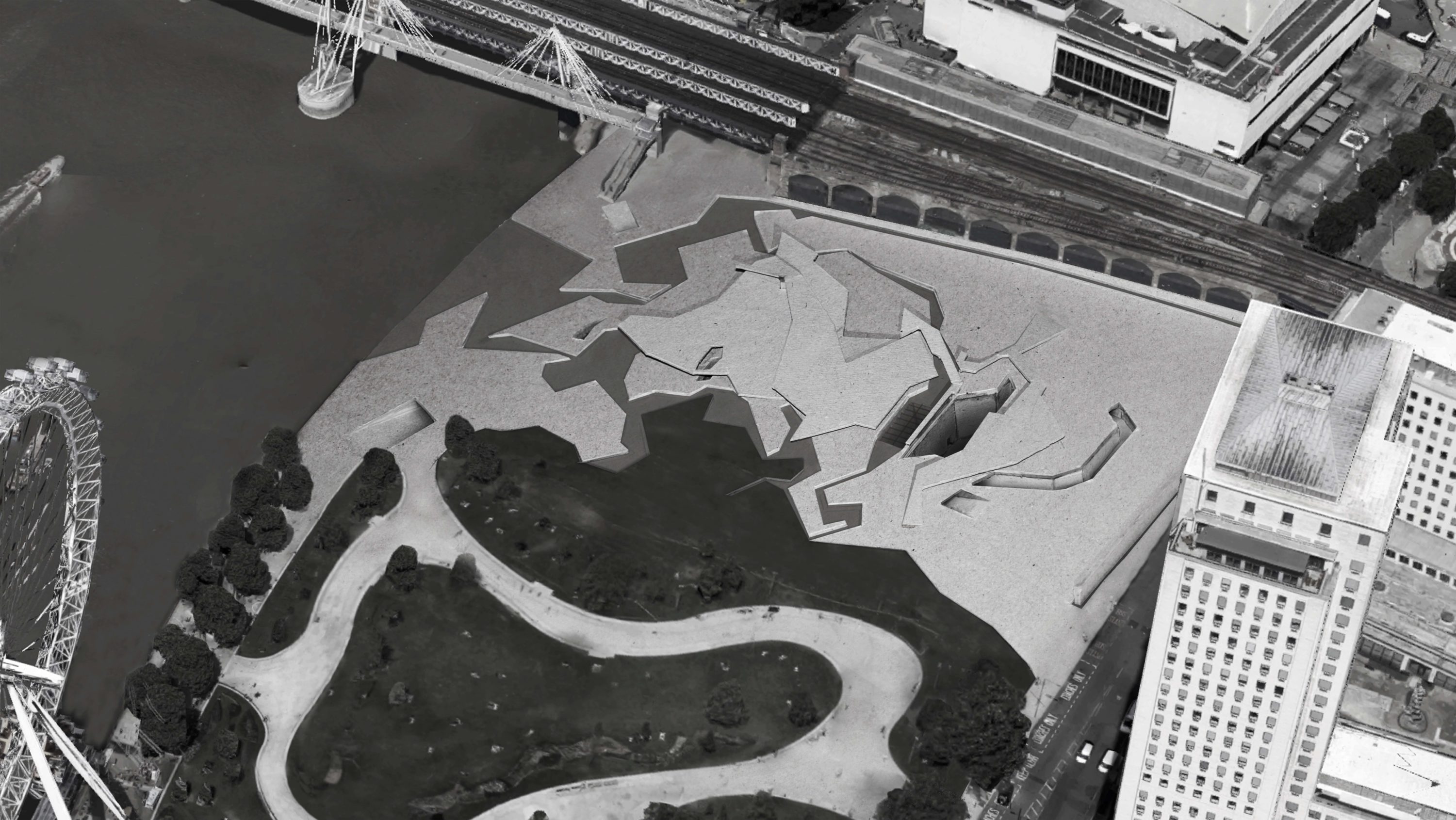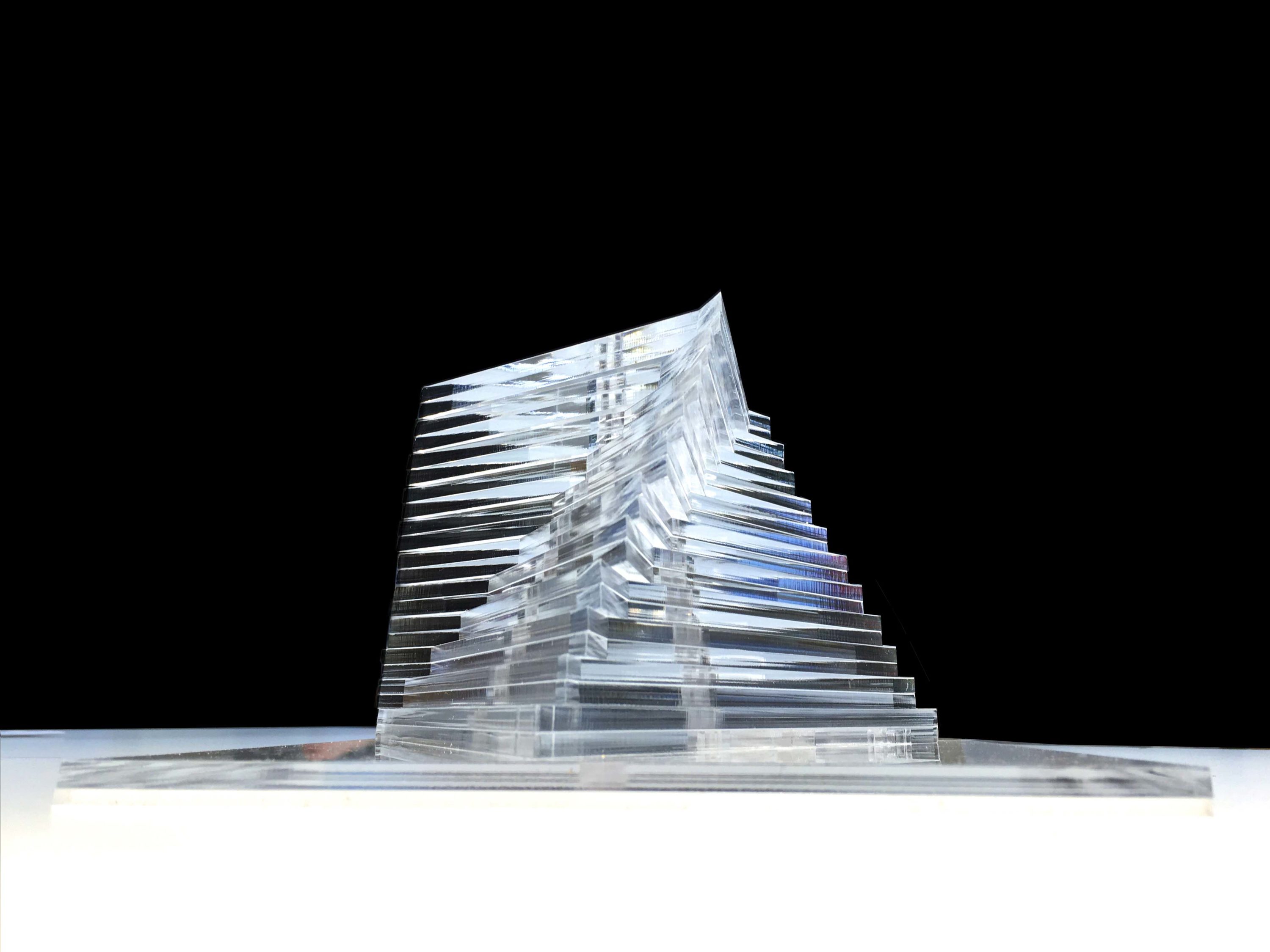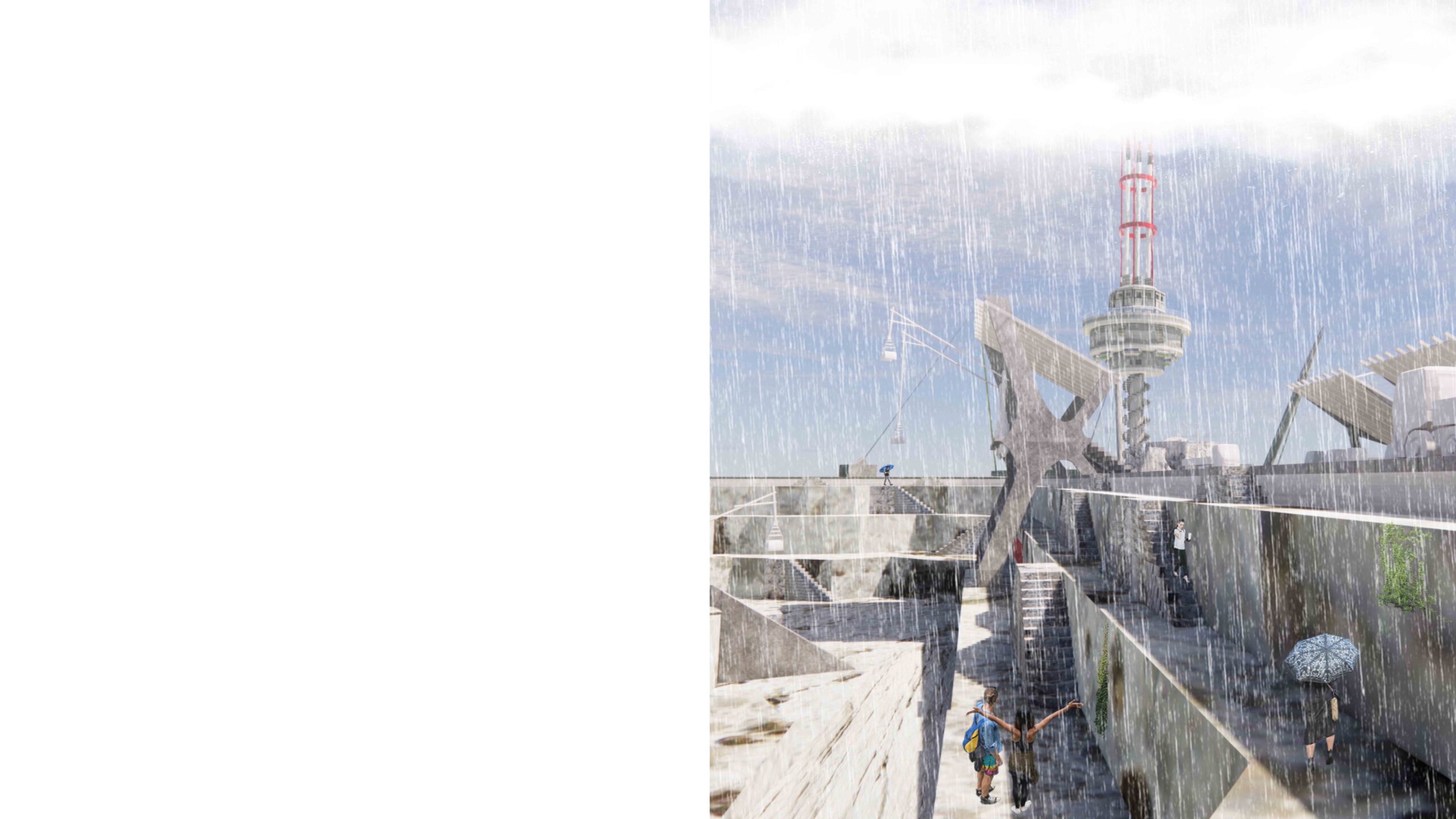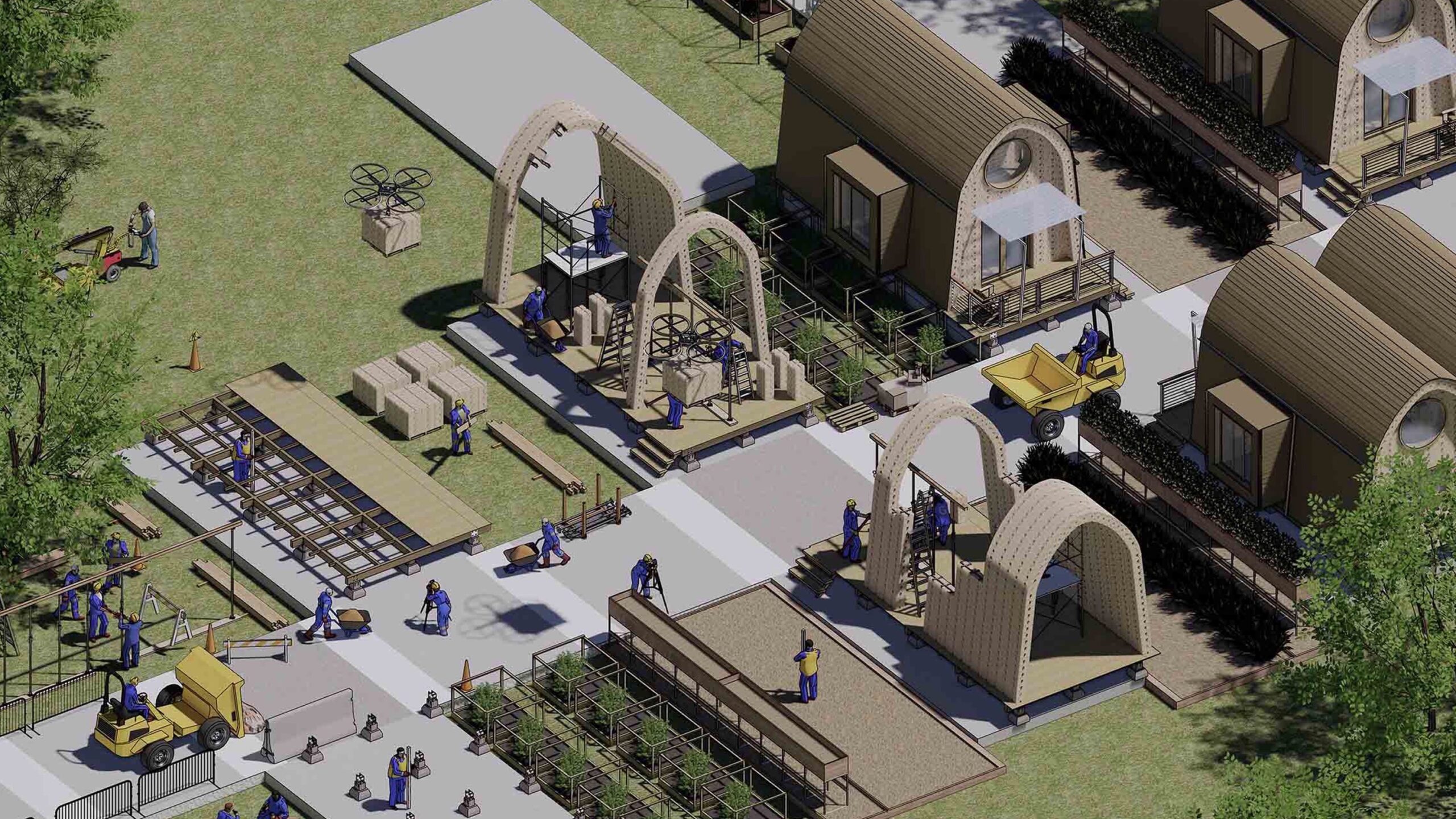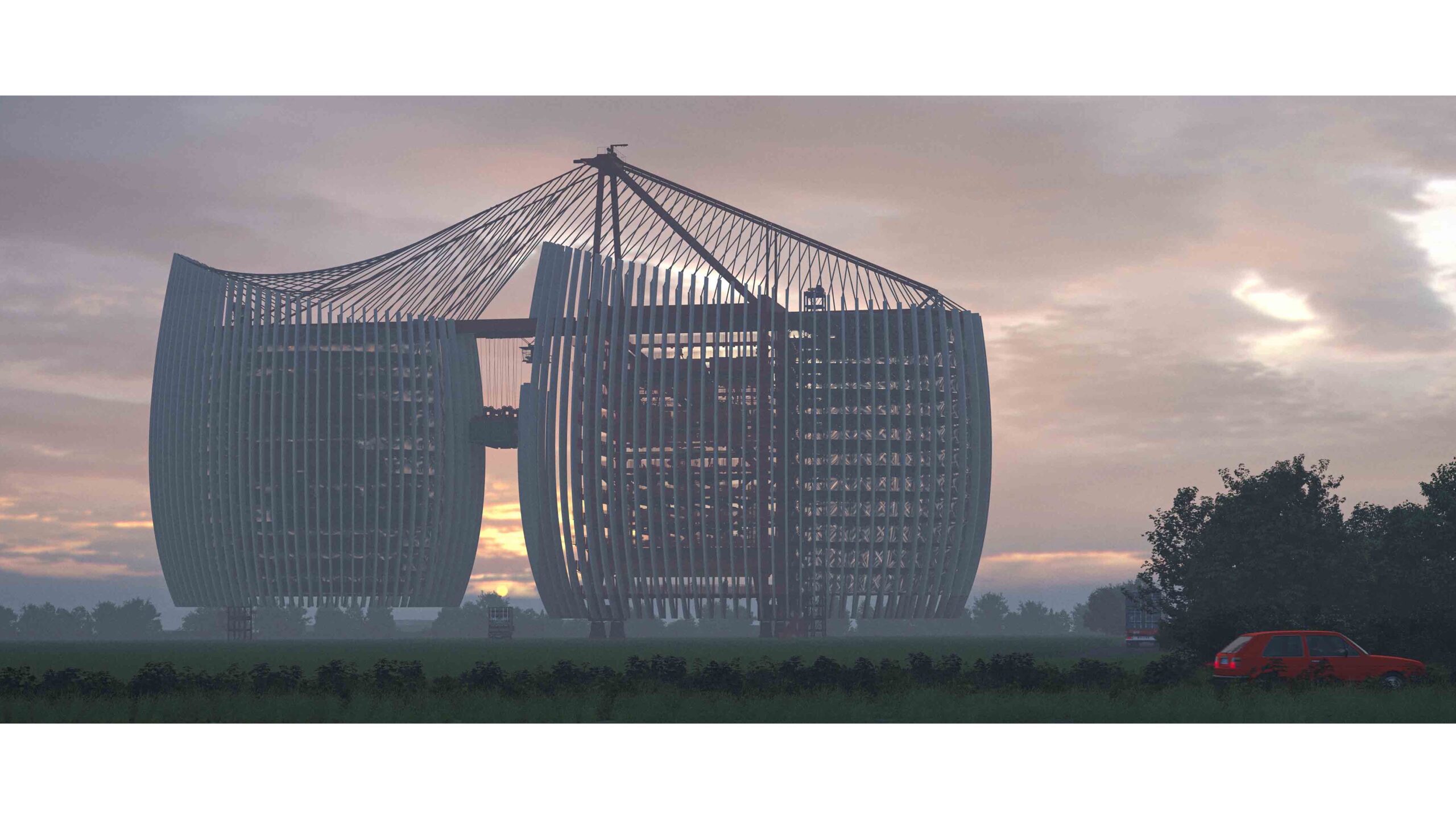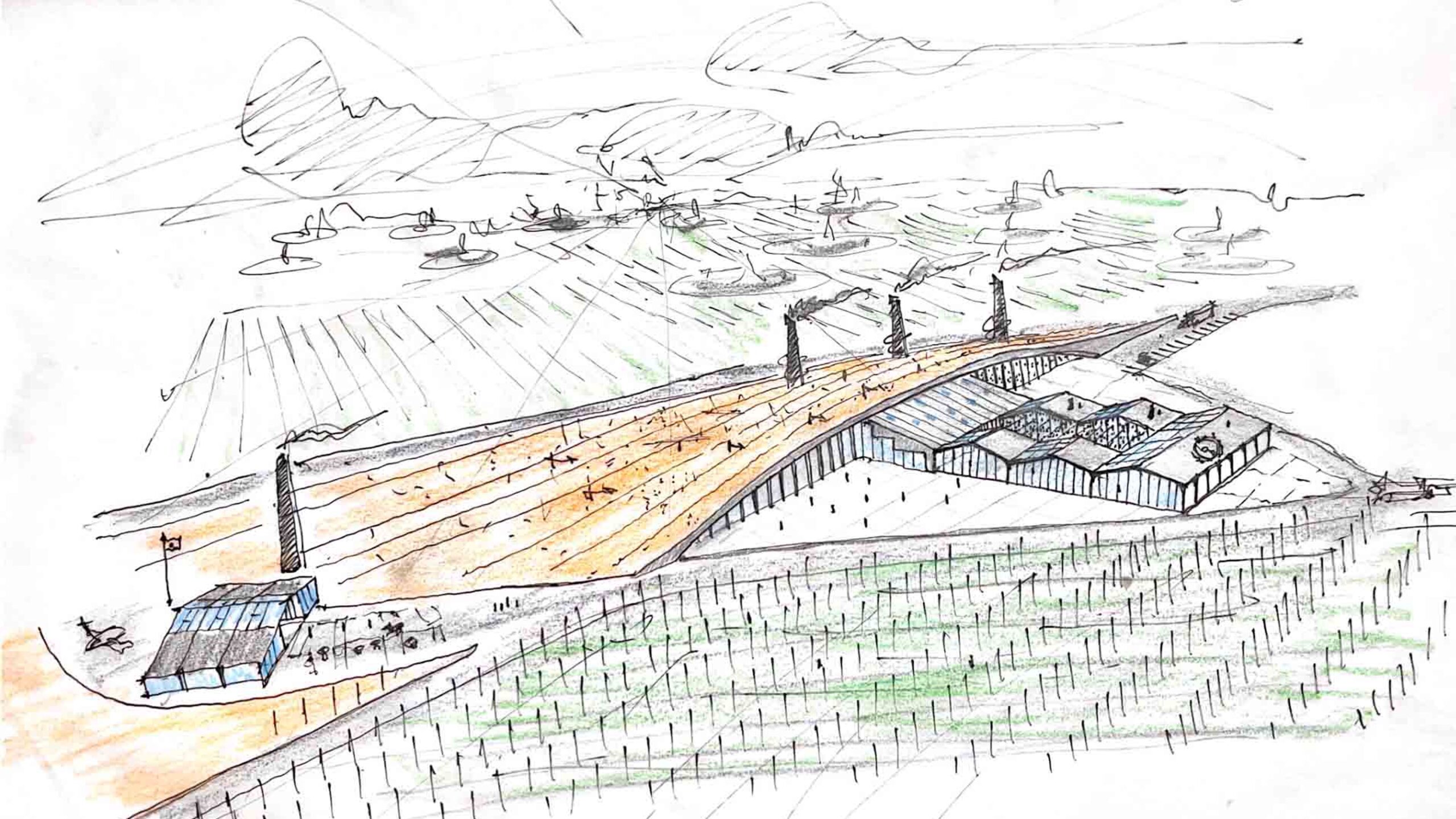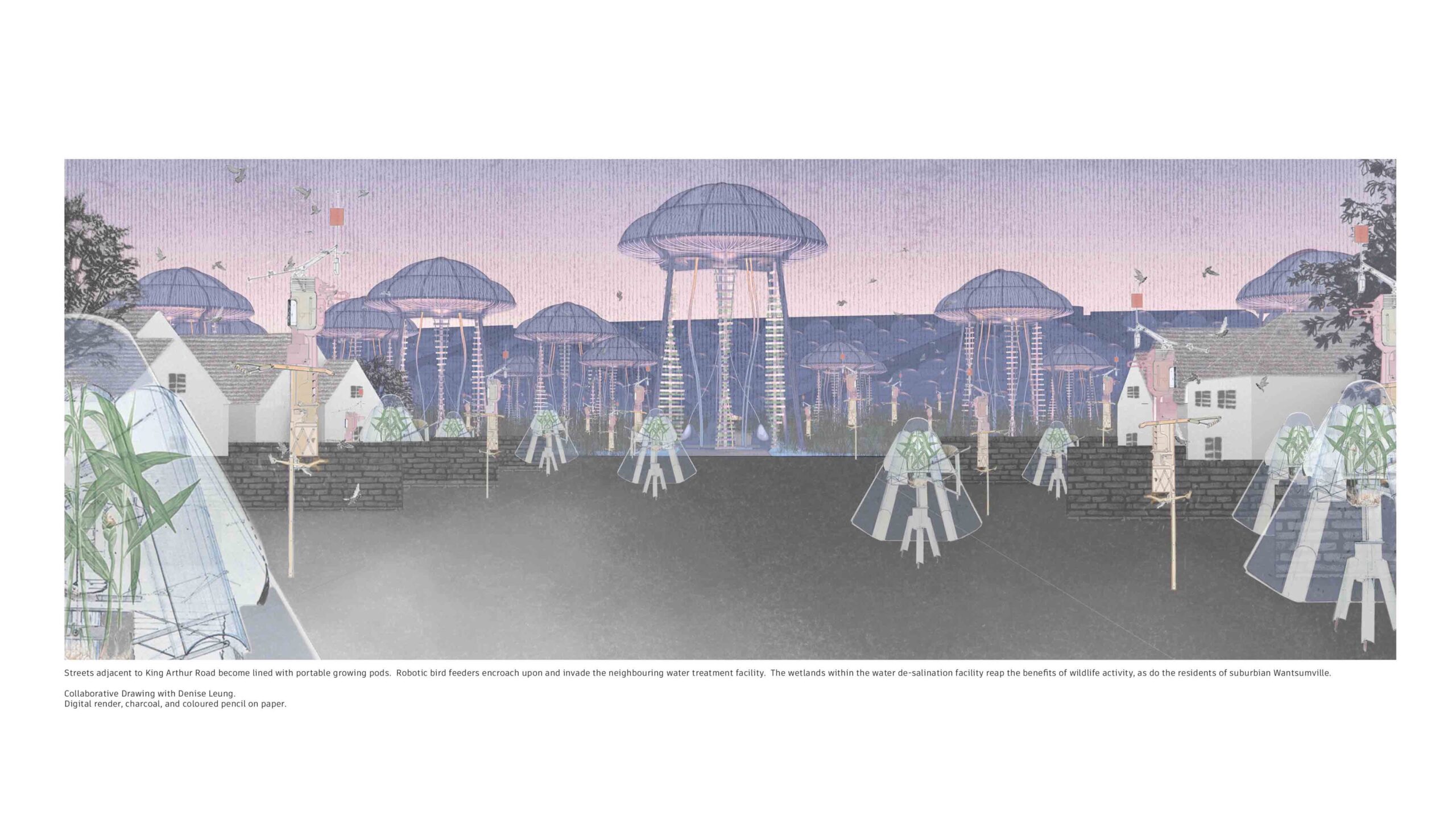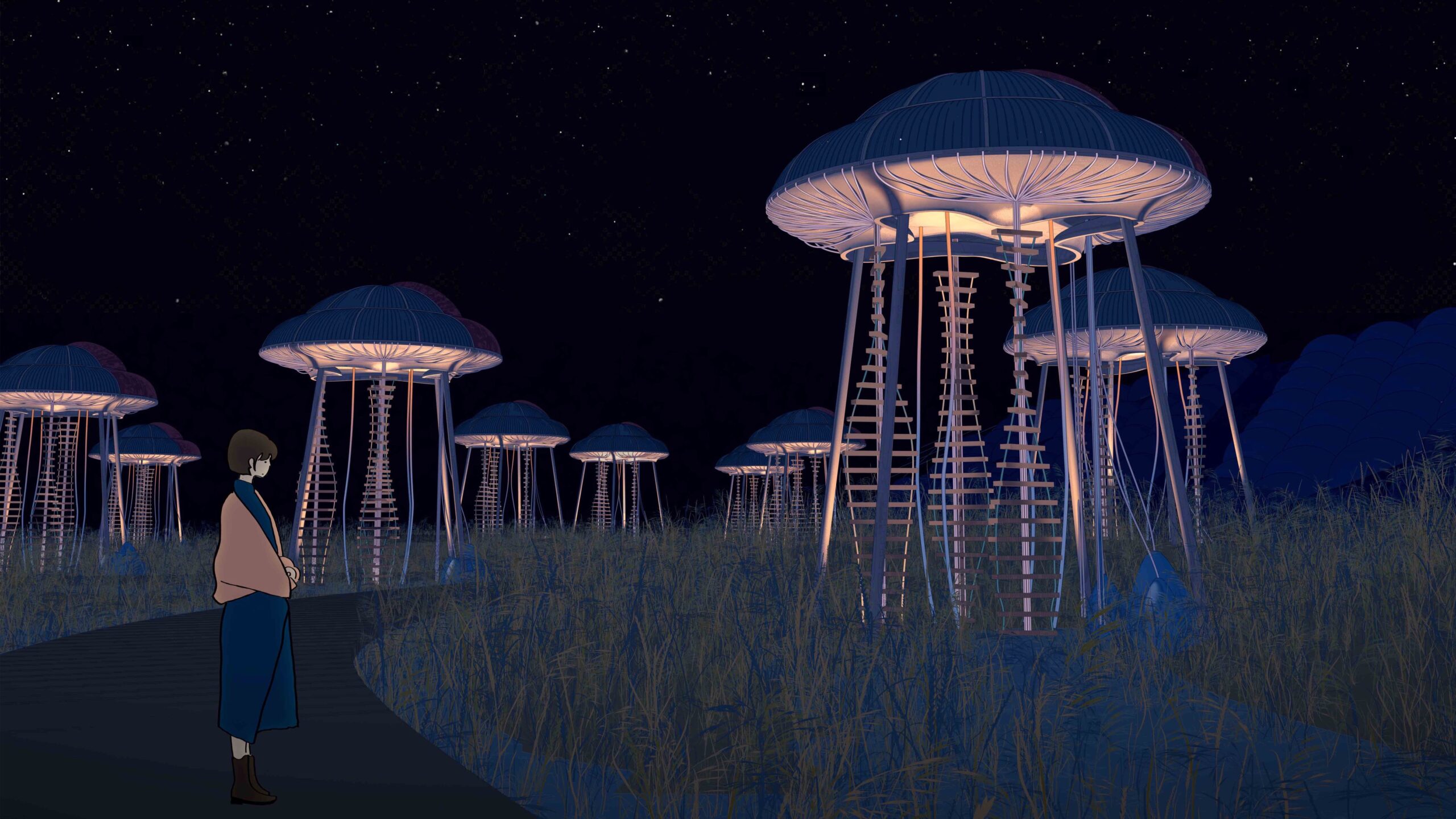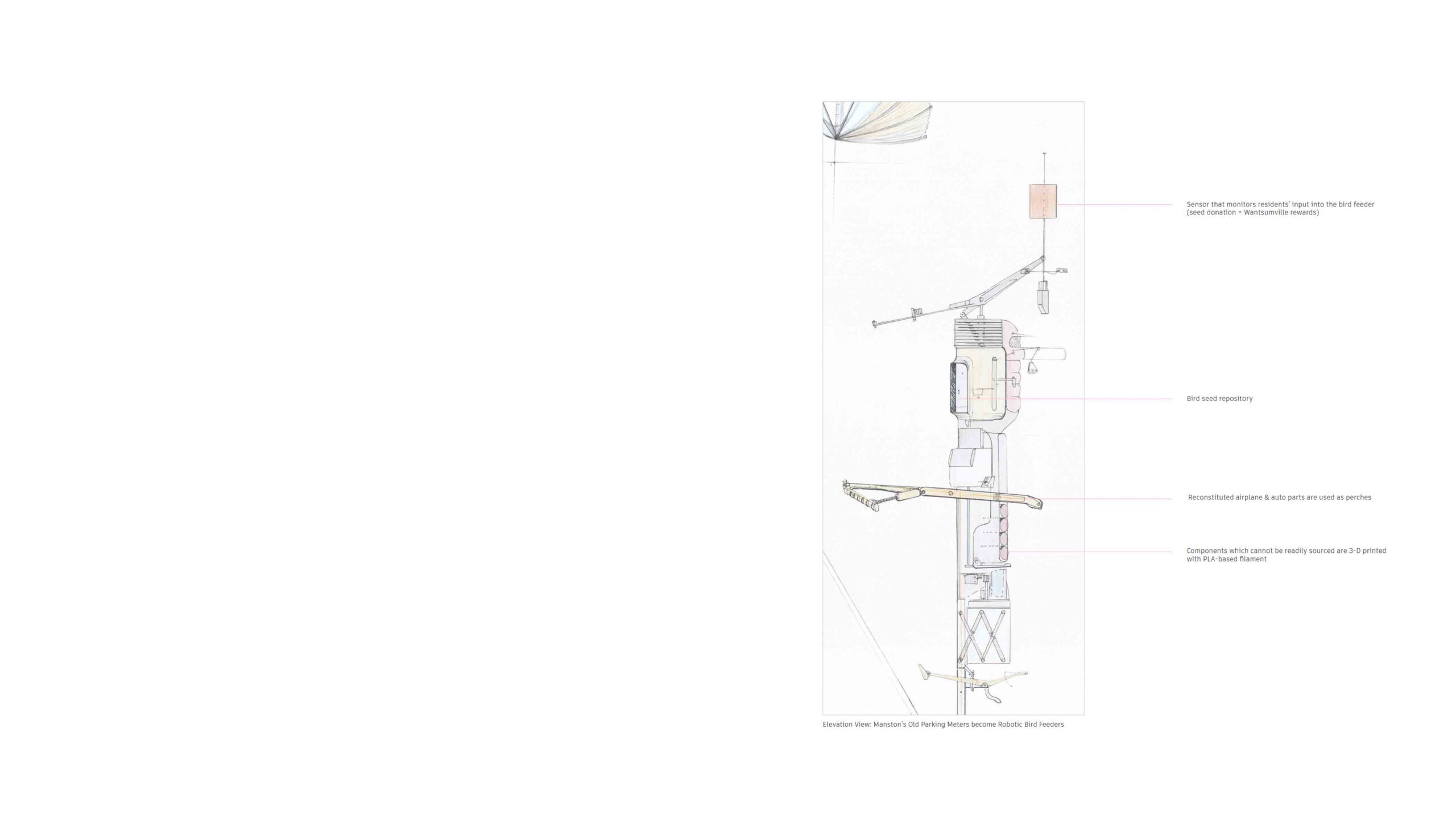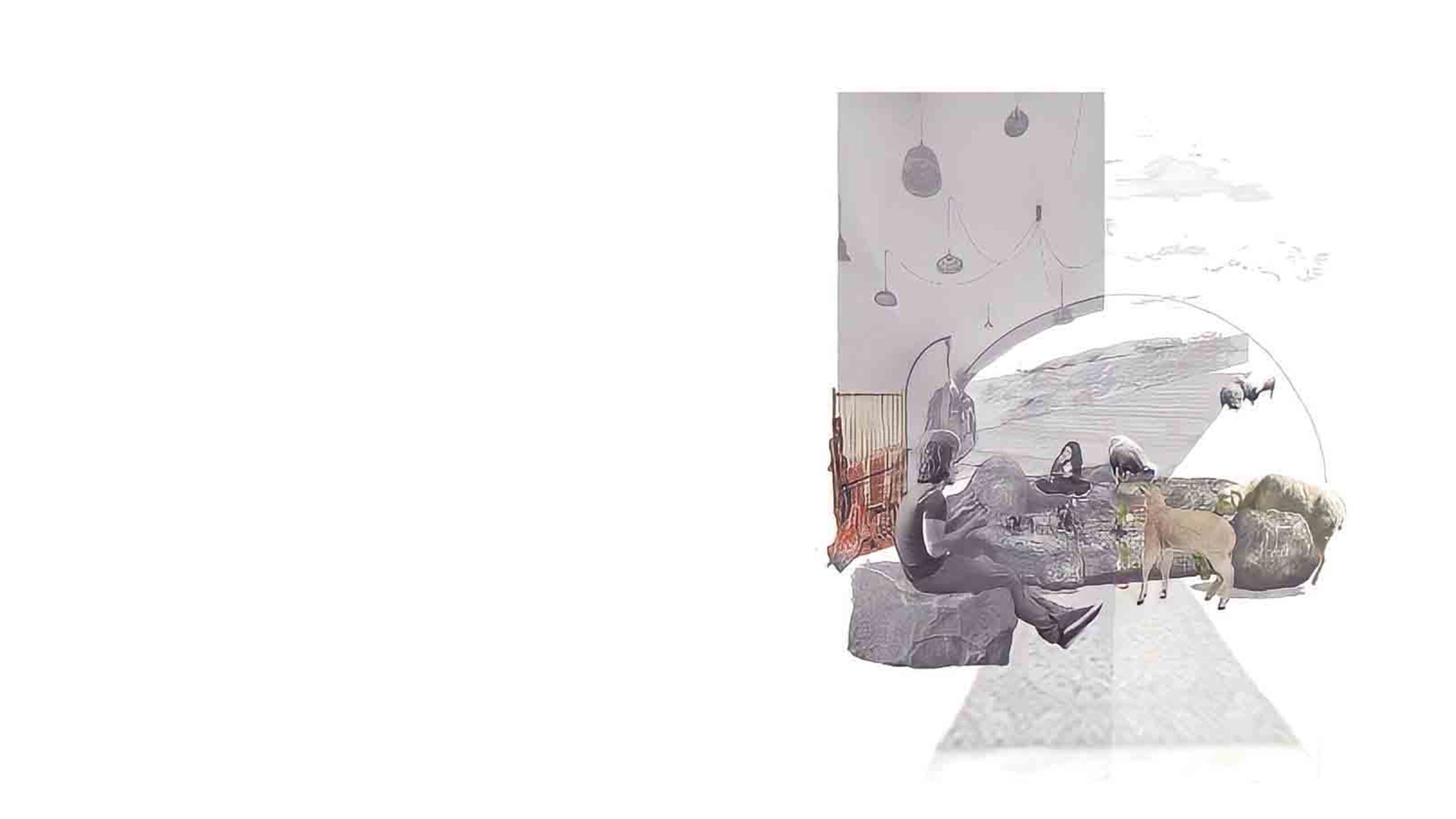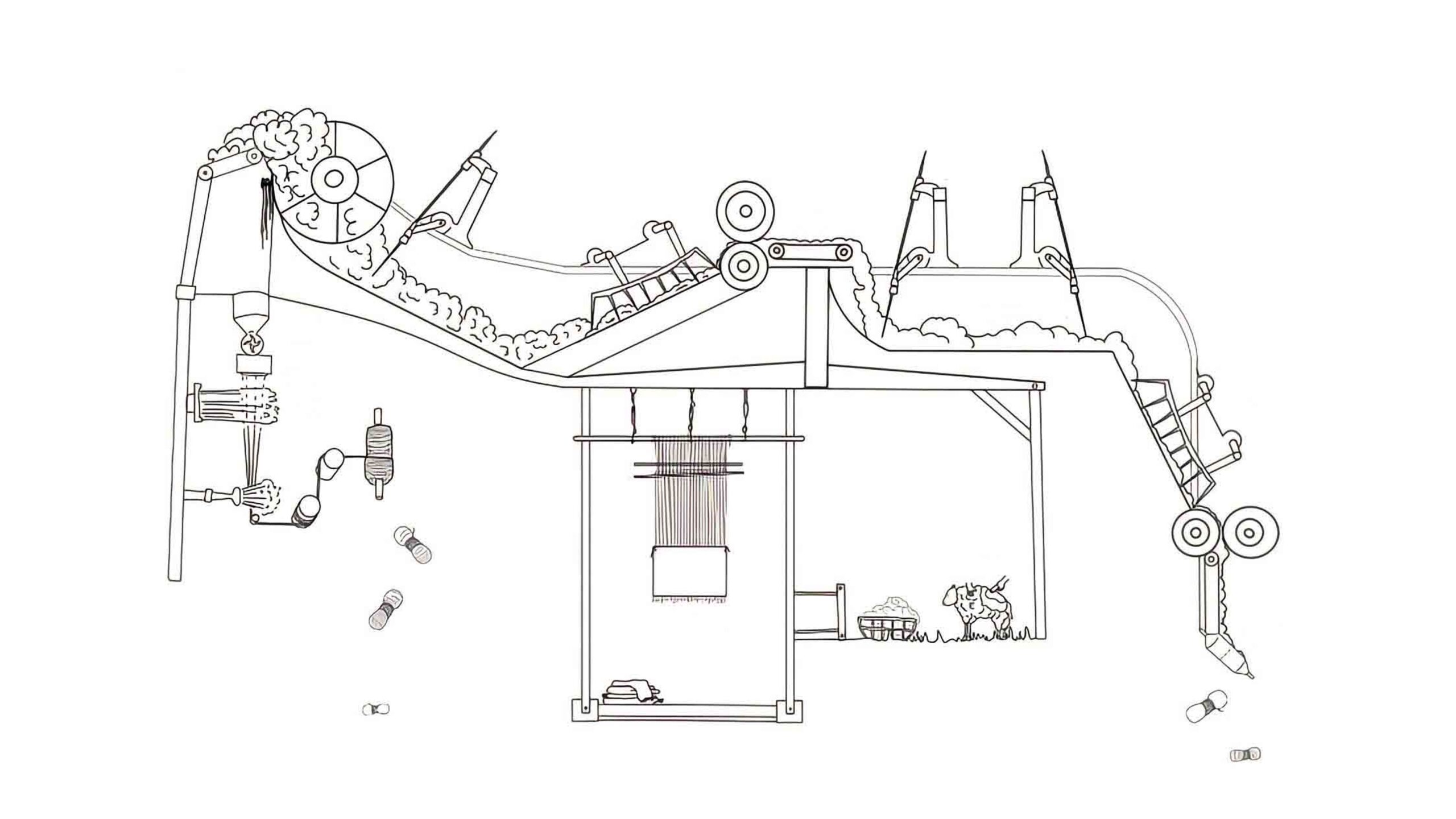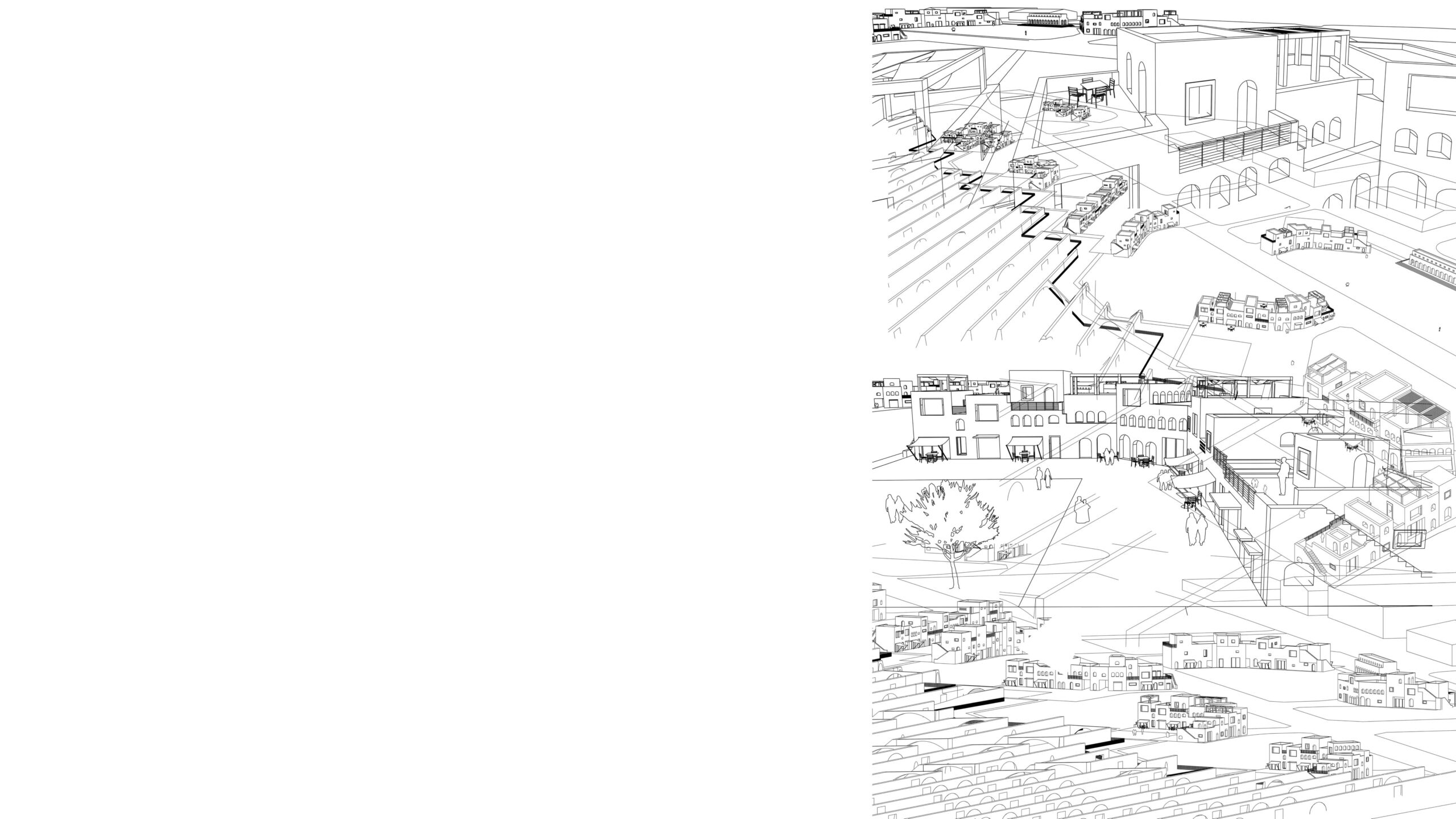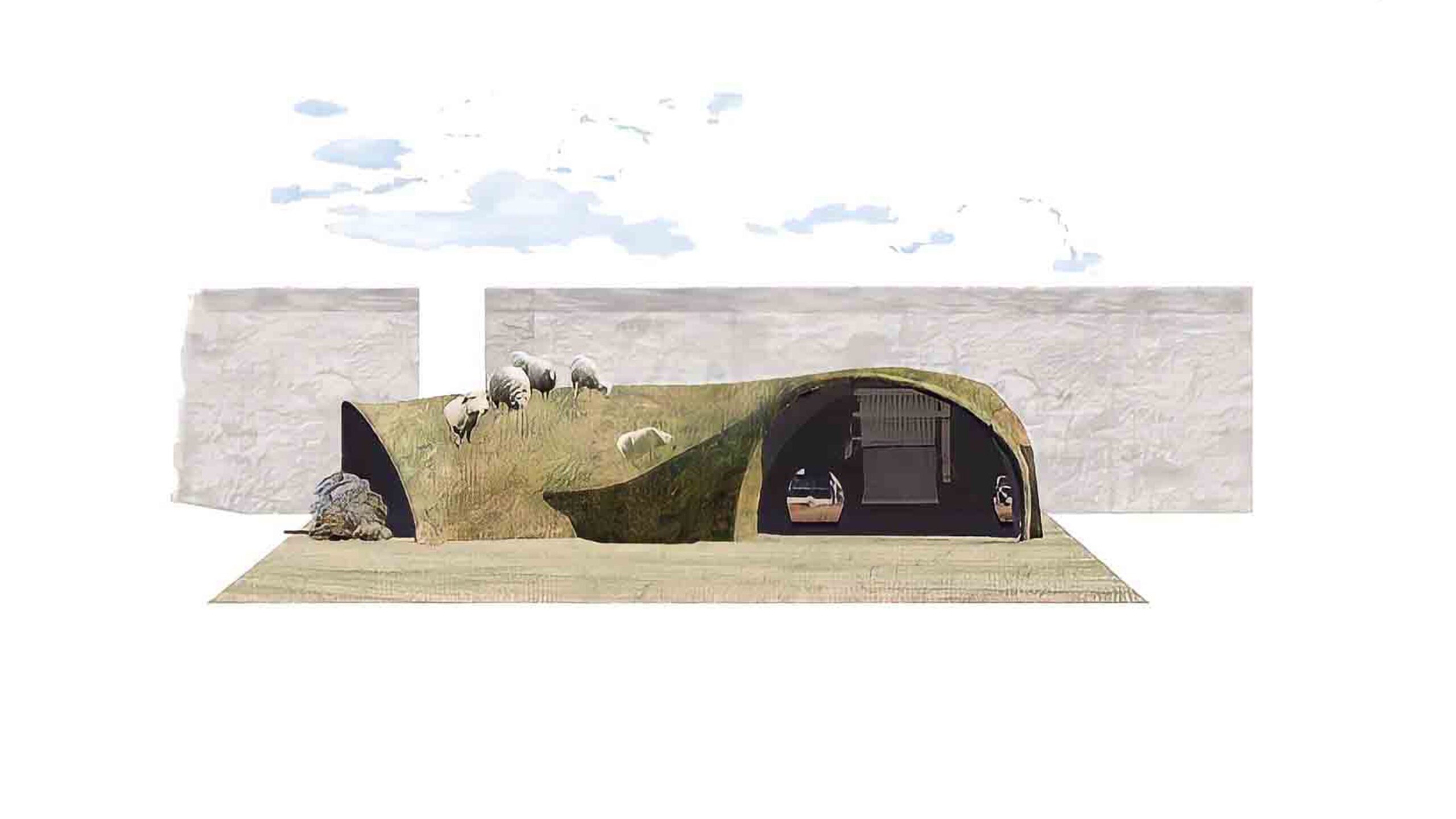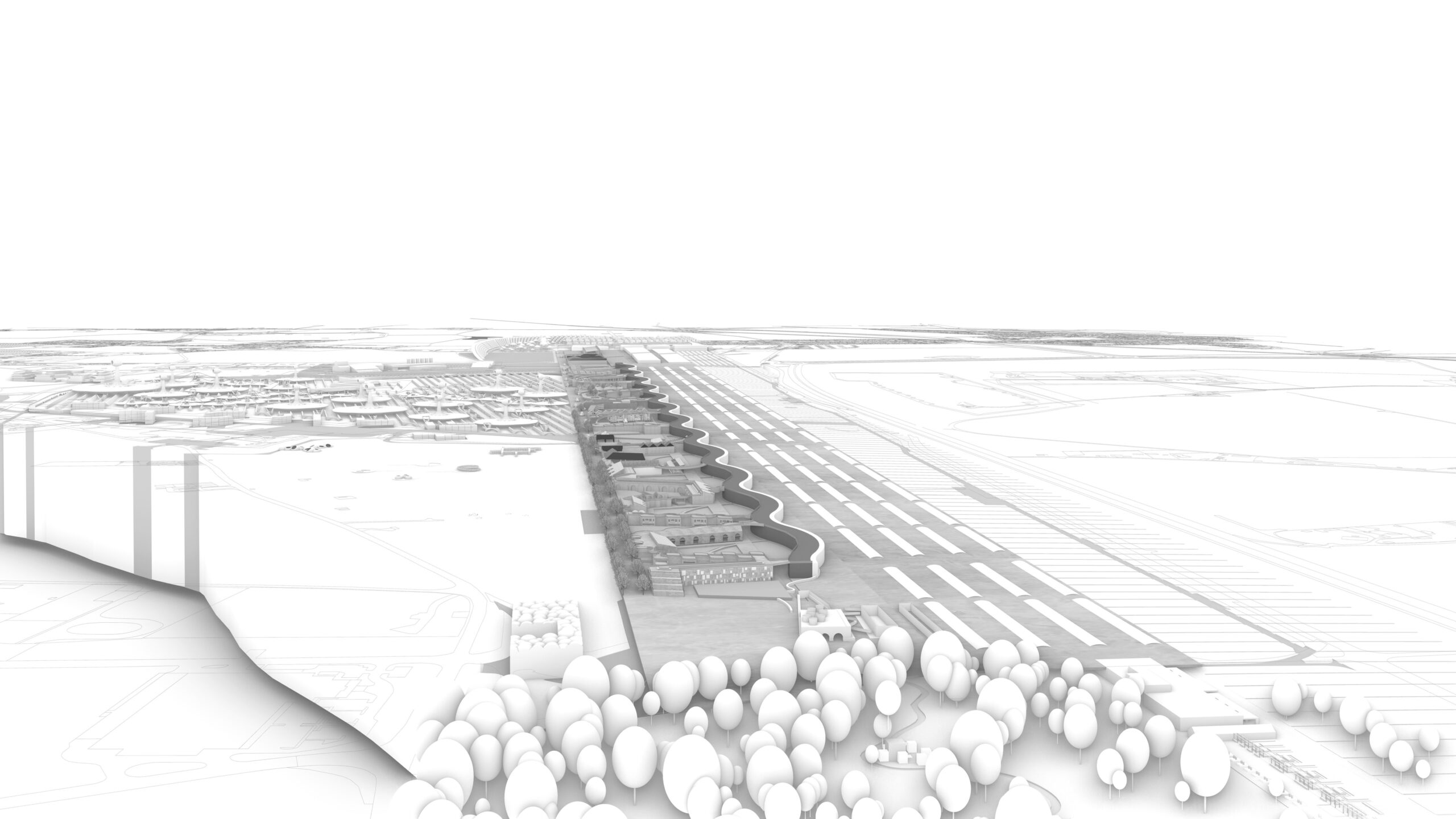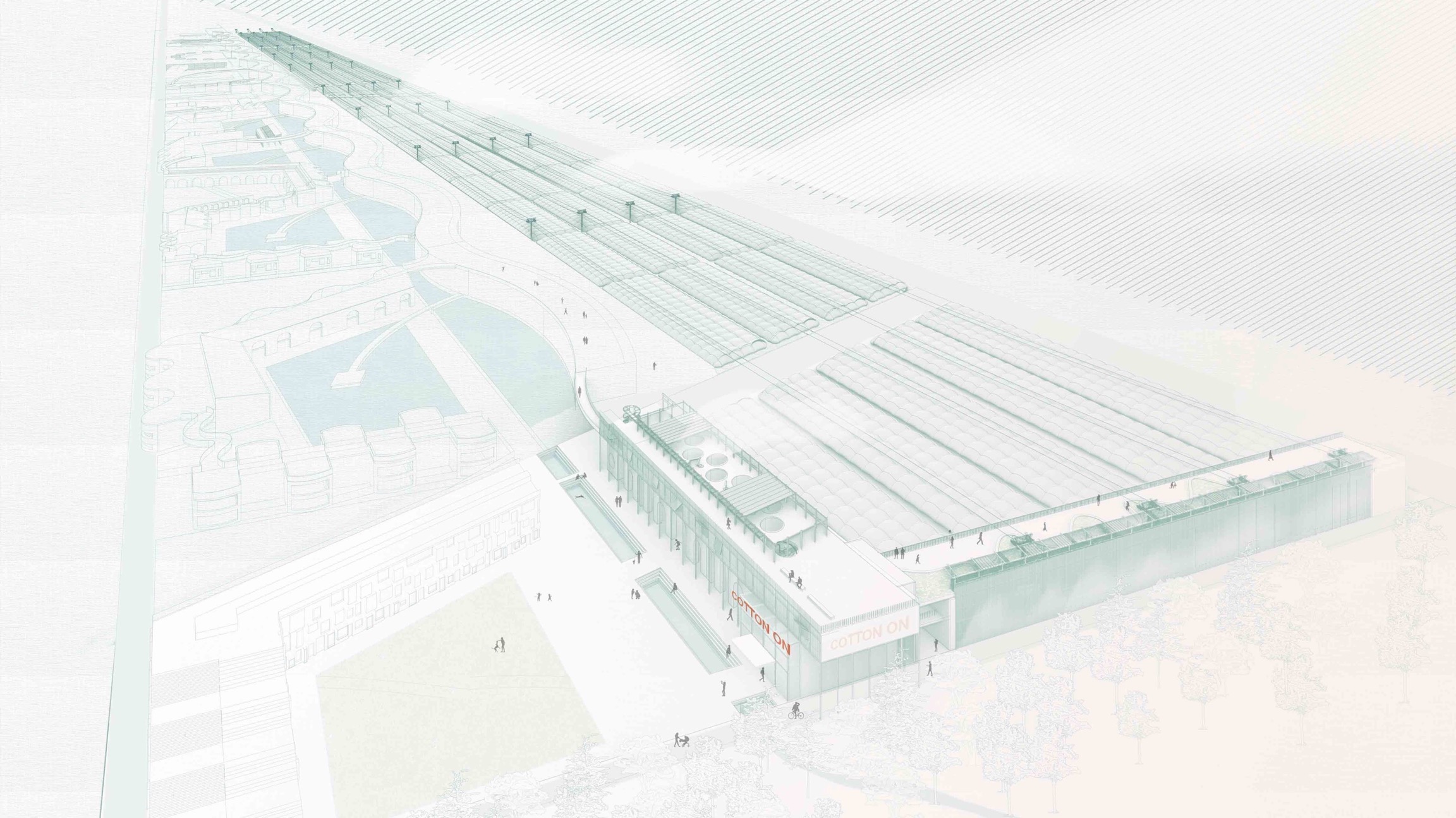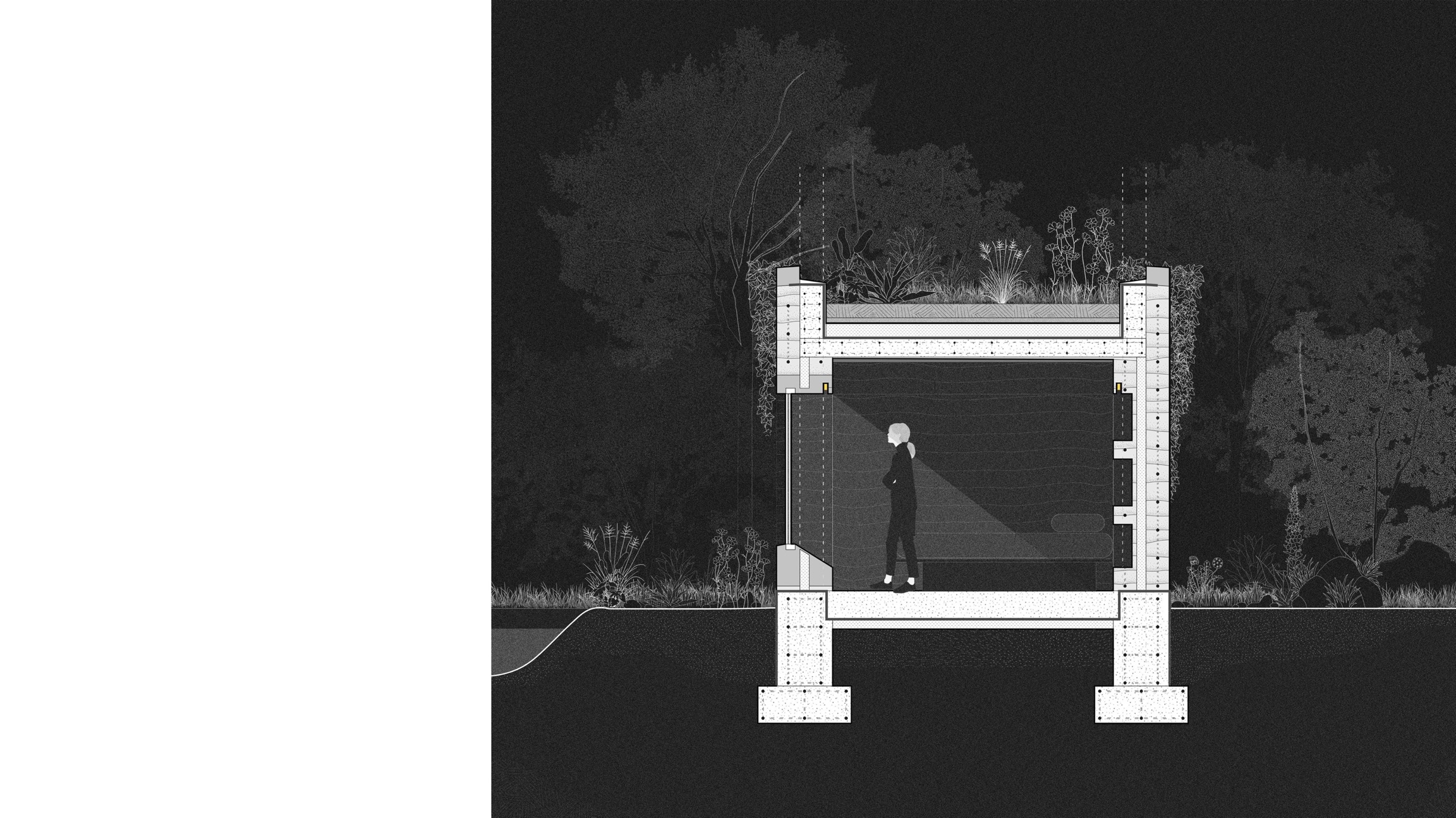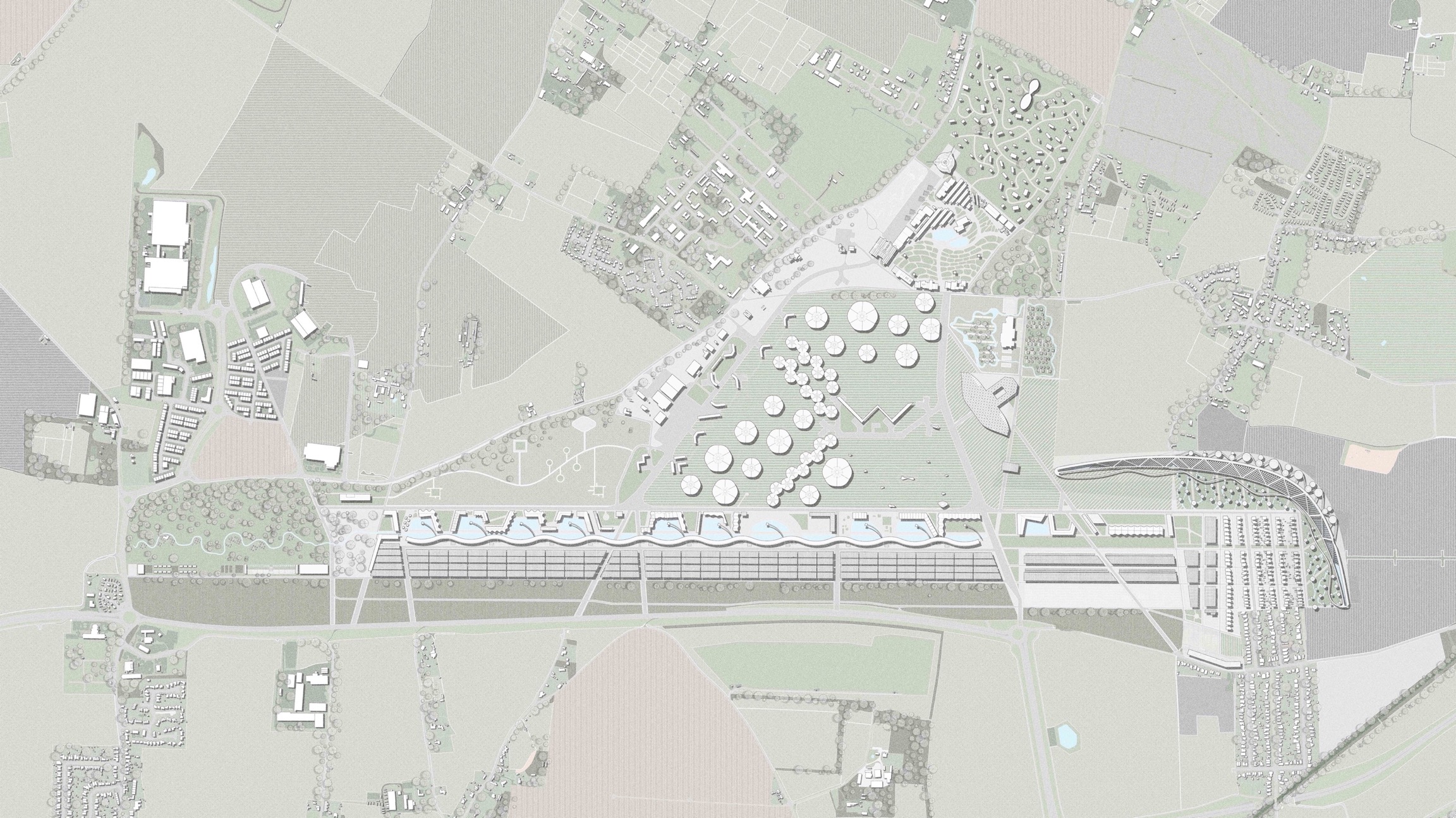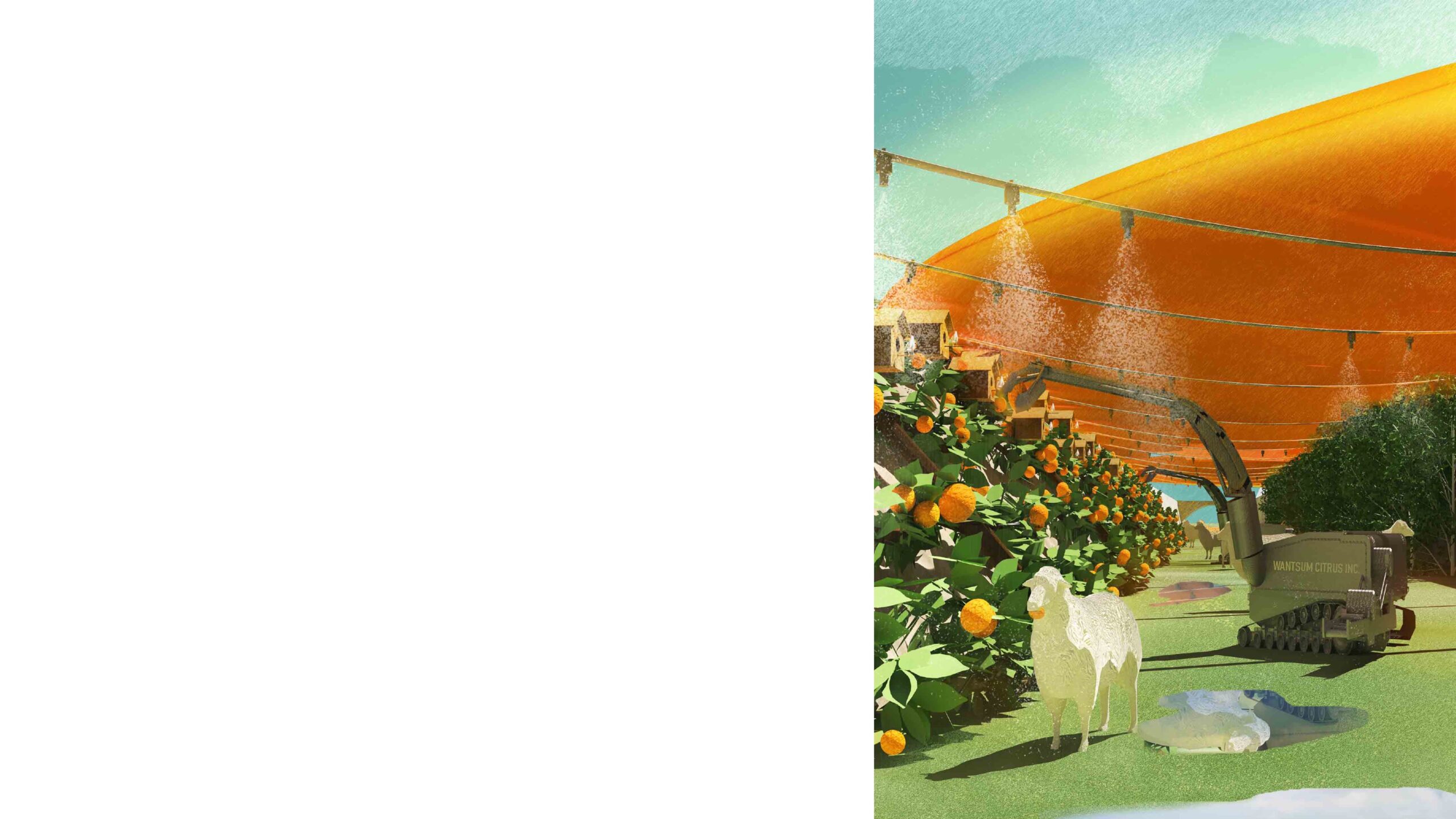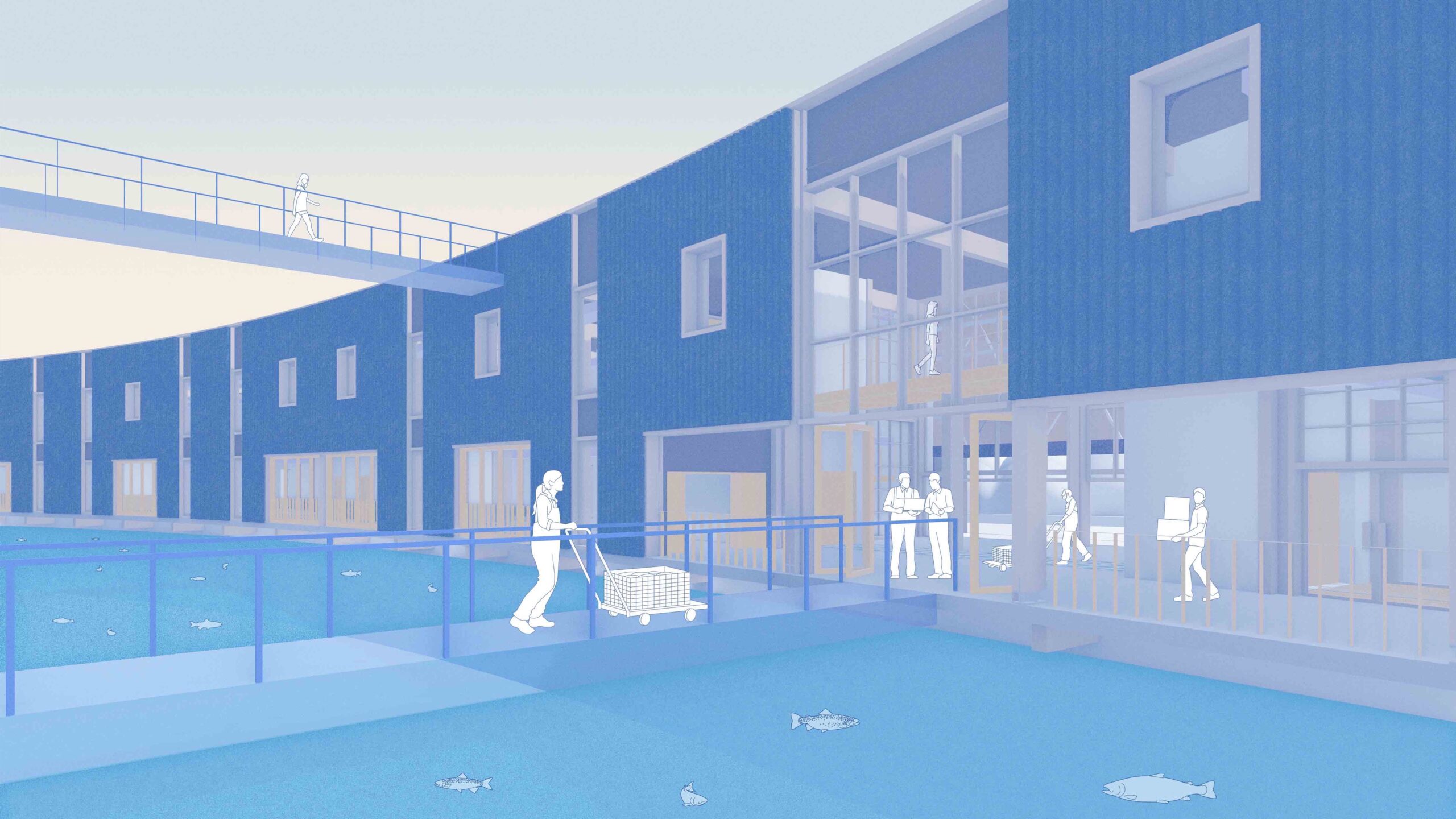Design Studio 12 ARCHIVE
Tutors: Ben Stringer and Peter Barber
Ben Stringer teaches design and cultural context studies at the University of Westminster. Recently he has been publishing articles about architecture and rurality.
Peter Barber has a practice noted for its social housing and urban design projects, mostly around London. He also teaches design studio at the University of Westminster.
Wantsumville
This year DS12 imagined an experimental productive settlement on the Manston Airport site in Thanet, Kent. Near the Wantsum channel, the airport’s 700 acres are mostly abandoned now; weeds are squeezing through the vast runway’s concrete slabs and the terminal building is derelict. An application for a commuter housing project was rejected. Often in the headlines, the site was used temporarily as a Brexit lorry park, and the Manston detention centre was at the centre of the ongoing row about the UK’s treatment of asylum seekers.
After World War Two, town planner, writer and anarchist Colin Ward argued that former airbases should be used for alternative communities to develop. In a similar spirit, we argue that such sites could be used to explore ways of addressing the critical issues that we currently face. Where should our food, water, energy and building materials come from? What kind of land ownership system would suit a more ecologically-minded society? What might a rural community look like in the future?
Our idea was to design a place where possibilities for alternative farming, manufacturing and social futures could be developed, using and making new sustainable technologies and materials: a zone of rural modernity.
We asked everyone in the studio to identify a different area within the airfield site and to develop a distinct programme for it. Each project includes different programmes of agriculture, industry and housing. While everyone’s individual projects are distinct, relations between them and with the neighbourhood are co-ordinated too. So together they form a hybrid cluster of interacting projects within a group plan. The final scheme is the result of individual imaginations, a lot of creative interactions, group thinking and negotiations with the existing infrastructure.
We went on a series of day trips to the airport, to the wartime tunnels in Ramsgate, to the abandoned hoverport at Pegwell Bay and more besides.These visits raised important questions about local industry and infrastructure, our relations with Europe, refugee conditions and rural settlement form.
In March we travelled to Paris where our trip included visits to the Nature Urbaine and Ferme Suzanne city farms, the L’Etoiles d’Ivry housing project and the Salvation Army building.

